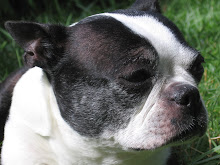No oversleeping for me today; I’m up bright and early. Today we are off to immerse ourselves in the glory of Renaissance art in the Uffizi Gallery. The Uffizi is another creation of the Medicis. It was originally built to house the administrative offices (or “Uffizi”) for the Medici government. When the Medici dynasty died out, the last of the Medicis, Anna Maria Ludovica, willed her family’s great wealth and treasure to the people of Florence in perpetuity.
Elisabetta is totally in her element here. She explains all the finer points of Cimabue’s Madonna versus Giotto’s Madonna versus some other guy’s Madonna. While it can feel a bit overwhelming, keeping all the Adorations and the Annunciations and the Ascensions straight, Elisabetta’s enthusiasm and eye for detail makes me appreciate these beautiful artworks in a way I could have never done on my own.
And here, in the following rooms, as some of the most famous and beautiful paintings I know. Here are Botticelli’s Birth of Venus and Primavera. There are Leonardos, Michelangelos, Titians,, and Raphaels. Elisabetta teaches us about Fra Filippo Lippi, the monk who fell in love with a nun and painted her and their children as Madonna and Child.
While the height of Florentine art occurred in the 1500s, the Uffizi has a few later pieces. I see two paintings by Rubens and an incredibly dramatic Sacrifice of Isaac by Caravaggio.
All this art has made us hungry, so we have lunch at the Trattoria il Porcellino, near the Mercato Nuovo. This lunch, a first course of pasta al pomodoro and a main course of steak and roast potatoes, is probably our least favorite of the week.
After lunch, we wander down to the Ponte Vecchio, the most famous bridge in Florence. This bridge was built in the 1300s and it was the only bridge in Florence not destroyed by the Germans in WWII, supposedly by the direct order of Hitler. As in times past, the bridge is lined by shops, most of which sell gold jewelry.
There is the most wonderful smell wafting through the area from shops near the bridge. As a quick snack, these places sell waffles, cooked on griddles right near the street. They are sold with a variety of toppings, including my favorite, Nutella.
Ann and I drop Florence back at the hotel for a rest, and the two of us go back to the Duomo and to the Duomo’s museum, housed in a separate building nearby. There we see statues, gargoyles, crucifixes, and various other pieces that at one time were part of the Duomo. There is a statue of Mary Magdalene by Donatello that gives me the shivers with its stark, almost modern style.
Have I mentioned the reliquaries? Every church and church museum has dozens of them on display. They are incredible works of art, made of silver, gems, and rock crystal. Unfortunately, most of them still contain their original relics—including at least one jawbone and something that looks like a chicken heart.
For dinner that night, we wander back to the Piazza della Repubblica, and on a nearby side street, we find La Posta. As usual, we choose to dine outside. I have the most incredible meal of gnocchi with gorgonzola and fiori fritti—fried zucchini flowers.


No comments:
Post a Comment